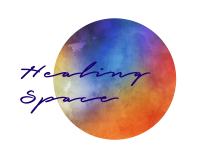
There is an art of letting go of small things as well as big things.
Let’s begin by reviewing the highlights from our recent conversations:
Firstly, begin every practice with gentle kindness and compassion towards yourself.
Secondly, create a container of lightness as you begin to sit with yourself and your areas of discomfort. Do your best to stay there, to stay present with all of your sensations and feelings.
From this foundation you are ready for the next step, which is beginning a short meditation practice, 10-15 minutes in the morning or whenever you can fit it in. I also recommend taking a few minutes in the evening to do a check in with how you are feeling, and a short body scan is highly recommended.
Curious how to apply this practice? Let’s use an example from my own life.
When I settle into a meditation practice, I notice several topics which are evoking a sensation of grief – sometimes it is a soft quiet grief, sometimes a bigger state of grief:
1. My work in the world is changing in its presentation.
2. My dog is getting very old and may not live through December.
3. I am frustrated by phases of not being able to see my grandchildren for two week periods or longer because of Covid or distance.
If I notice each feeling separately through sensations in my body, then I have a chance to use my breath to move through the feelings and release them by breathing into the area of heaviness or tightness – allowing movement in my body, then exhaling a release or action.
I take my breath in with kindness and compassion, causing expansion in the area of tightness, which allows the grief to move up and out to be expressed as a true feeling.
How can you stay present with yourself in general, and especially during your meditation time or check-in time?
Here are a few wonderful quotes from one of my teachers, Pema Chödrön, an American buddhist Nun:
“We become less and less able to reside with even the most fleeting uneasiness or discomfort. We become habituated to reaching for something to ease the edginess of the moment. What begins as a slight shift of energy – a minor tightening of our stomach, a vague, indefinable, feeling that something bad is about to happen – escalates into addiction.”
“We see that we’ve fabricated all kinds of strategies to avoid staying present, particularly when we’re afraid that whatever’s happening will hurt. We also see our strong belief that if only we could do everything right, we’d be able to find a safe, comfortable, and secure place to spend the rest of our lives.”
We can see the steps to becoming unconscious.
We all do this every day, not even knowing that we are doing it.
Here is a very simple practice to begin our expansion process when uneasiness arises. This is a simplification of Tonglen, a Buddhist practice.
Highlights of the practice include:
• Practice meditation daily to allow a feedback system for you to see and feel what you are holding on to and what you want to move out.
• This process will bring up grief as we are releasing old ways and concerns.
• Practice noticing this grief and sweetly holding it as you breath into the sensations in the body.
• Lean into the feeling of interconnectedness with the world and our sense of community as we enlarge our view.
• Breathe into our hearts, and acknowledge the discomfort or pain that we feel with the recognition that others feel this pain as well.
• Ask yourself, “Is there any action I need to take right now?”
• Ask yourself, “What do I need right now? How can I comfort myself in a healthy way?”
• In the evening do a short check-in using a body scan and any of these tools listed above.
More from Pema Chödrön on the practice of Tonglen:
“Sharing the heart is a simple practice that can be used at any time and in every situation. It enlarges our view and helps us remember our interconnection. A version of tonglen on the spot, it is also a method of enhancing our ability to rejoice.”
“The essence of this practice is that when we encounter pain in our life we breathe into our heart with a recognition that others also feel this. It’s a way of acknowledging when we are closing down and are training to open up. When we encounter any pleasure or tenderness in our life, we can cherish that and rejoice. Then we make the wish that others could also experience this delight or this relief. In a nutshell, when life is pleasant, think of others. When life is a burden, think of others.”

